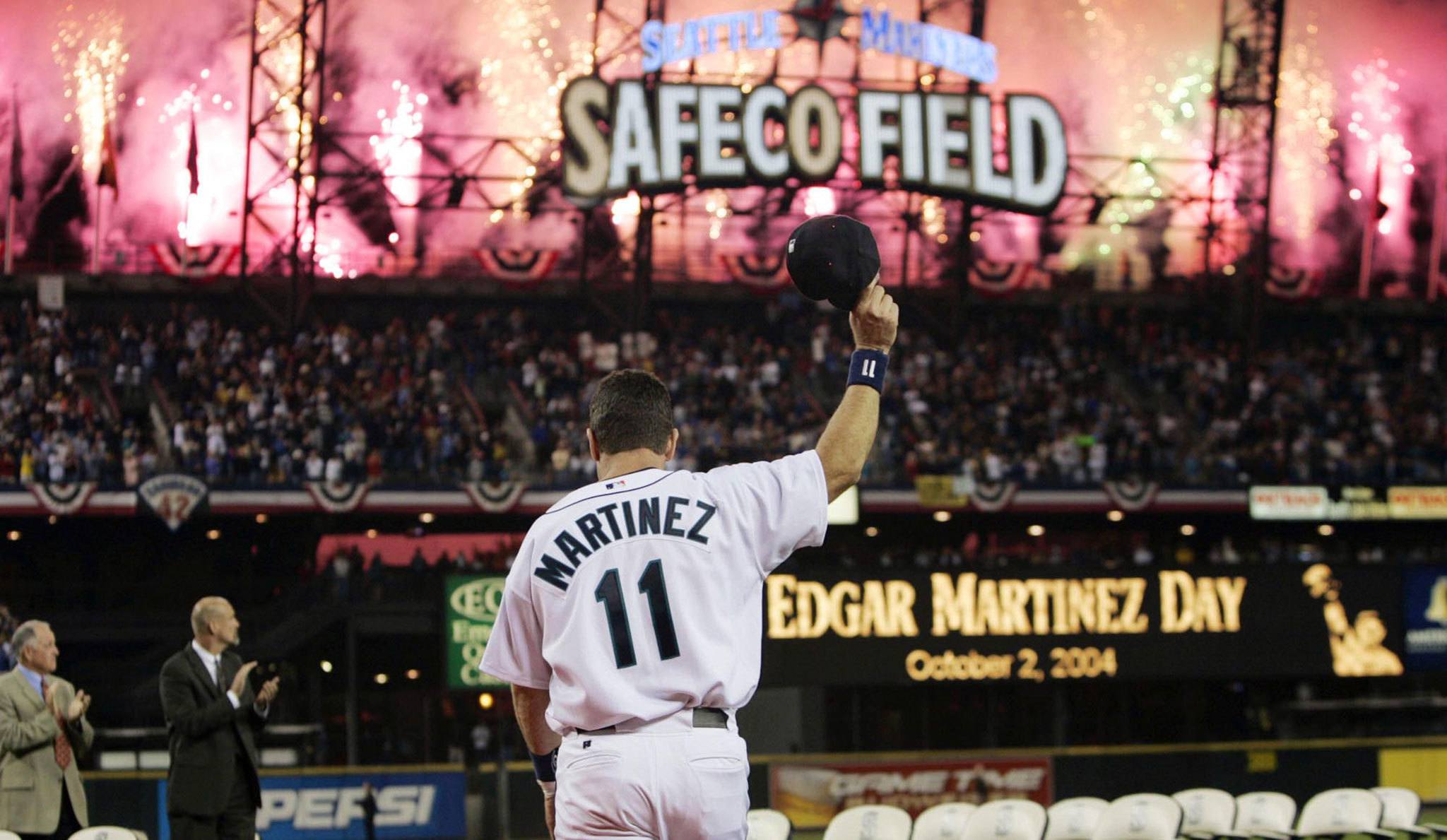Edgar Martinez. It’s a name that generates a lot of positive emotions in the Pacific Northwest.
Martinez is the most beloved Seattle Mariners player of all-time. He spent all 18 seasons of his major-league career with the Mariners from 1987-2004, making seven All-Star teams and winning two American League batting titles. Safeco Field, the stadium where the Mariners play, is located on a street that now bears Martinez’s name. Utter the phrase, “It’s a light bat,” in the middle of a group of people of a certain vintage and one’s sure to be greeted by at least a few smiles.
So understandably there was a lot of local rooting interest Wednesday when the Baseball Writers Association of America released its Hall of Fame voting results. Once again Mariners fans were left disappointed as Martinez didn’t make it.
But I’m here to tell Mariners fans not to worry. Martinez’s time is coming.
Martinez received 58.6 percent of the possible votes, well short of the 75-percent threshold required for enshrinement in Cooperstown. However, his vote total was up significantly from last year, when he received just 43.4 percent of the possible vote. His 15.2-percent increase the second-biggest jump among returning players on the ballot. So Martinez is trending upward in a big way.
The question is whether Martinez has enough momentum to push him over the finish line in time. This was Martinez’s eighth year on the ballot, meaning he has just two more shots at getting voted in by the baseball writers. Will he hit that 75-percent mark before he drops off the ballot?
I’m not a Hall of Fame historian, so I don’t know how to read the voting trends and intelligently predict what will happen in the future. I know Tim Raines was at 55.0 percent when he was in his eighth chance two years ago, and he surged over his final two years to be elected in his final attempt.
But just because it happened for Raines doesn’t guarantee anything for Martinez. We don’t know how the new players coming onto the ballot the next two years — Chipper Jones and Jim Thome become eligible next year, Mariano Rivera the year after that — might affect Martinez’s chances. We don’t know what the changing attitudes towards players suspected of using performance-enhancing substances during their careers — both Roger Clemens and Barry Bonds topped 50 percent for the first time this year — will influence the vote. And we don’t know how transparency — next year every ballot will be made public for the first time — might change the voters’ choices.
There are factors working against Martinez. He spent the majority of his career as a designated hitter, and some penalize him for not contributing defensively. Martinez is also hurt by playing his entire career in Seattle, which kept him out of the national consciousness.
But what we do know is that in baseball, more than any sport, the numbers matter. The numbers hold up over time better than any other factor. And the closer one looks at the numbers, the harder it becomes to leave Martinez out.
Forget the traditional numbers like batting average (Martinez has a career .312 batting average), home runs (309) or RBI (1,261). Let’s examine the more advanced analytics, beginning with wins above replacement (WAR).
WAR takes into account all of a player’s contributions (thus including the fact Martinez spent little time on the field playing defense) and determines a player’s value compared to a fringe major leaguer/good triple-A player. FanGraphs.com calculates that Martinez earned 65.5 WAR during his career. That ranks 123rd all-time in baseball history. There are currently 220 players in the Hall of Fame, so by that measure Martinez is comfortably a Hall of Famer, ahead of the likes of Tony Gwynn, Yogi Berra, Mike Piazza, Ernie Banks, Bob Feller and Carl Hubbell.
How about strictly as a hitter? One advanced hitting stat currently popular in the analytics world is weighted runs created plus (wRC+), which takes into account a player’s hit frequency, power, batting eye and the ballparks in which he played. A league-average number is 100. Martinez’s number, according to FanGraphs, is 147. That’s 33rd all-time, ahead of top-tier Hall of Famers like Honus Wagner, Mike Schmidt and Eddie Collins, as well as Martinez’s contemporary and former teammate Alex Rodriguez.
These kind of advanced stats have received an increasing amount of play in the media in recent years, and Martinez’s gradually increasing vote total suggests the voters are paying closer attention to the advanced metrics.
Will enough voters come around before Martinez’s 10 years are up? My guess is they will. But even if they don’t, there’s still the Eras Committee, which considers players who are no longer eligible on the BBWAA ballot. The more that time passes, the more advanced statistics wriggle their way into the mainstream. And the more advanced stats become mainstream, the more the evaluators will be inclined to honor Martinez.
Indeed, the Martinez Hall of Fame boulder is rolling downhill and picking up speed. It’s just a matter of time before it crashes through the doors to Cooperstown.
For more on the Seattle sports scene, check out Nick Patterson’s Seattle Sidelines blog at www.heraldnet.com/tag/seattle-sidelines, or follow him on Twitter at @NickHPatterson.
Talk to us
> Give us your news tips.
> Send us a letter to the editor.
> More Herald contact information.

























